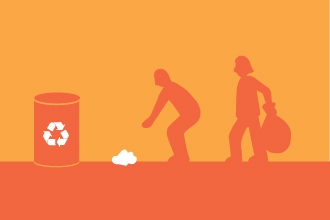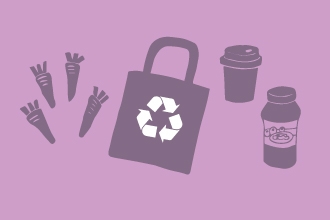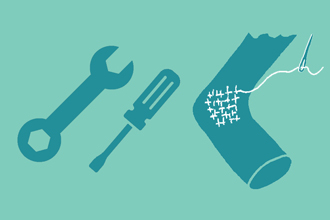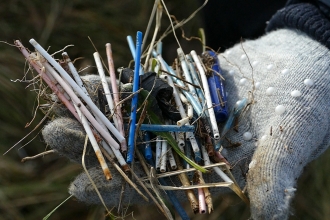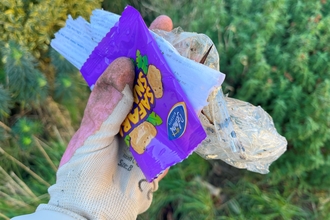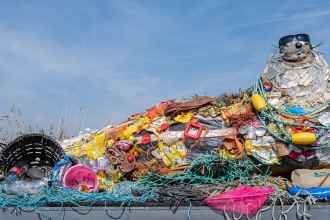Not only does pollution taint our picturesque natural landscapes, but it can also have far-reaching negative impacts for the wildlife that call them home. To make matters worse, plastics, metals, glass and other materials can persist in the environment for thousands of years or more, causing never-ending problems for the species we work so hard to protect.
Lingering effects of litter
Jamie Hall - edited with AI Photoshop.
Not-so-tasty treats
To an unknowing animal, litter can easily be disguised as a tasty treat. This is a huge problem for our wildlife which may fill their stomachs with plastics and other rubbish, instead of energy-rich foods they need to survive. Plastics and similar culprits may cause choking, airway or stomach obstruction and can ultimately lead to death.
But it’s not just the larger discarded objects causing a problem, tiny microplastics are just as deadly. These build up in the bodies of our smaller critters, impacting a whole host of animals as they pass along the food chain. These tiny plastics can wreak havoc on our wildlife’s immune function, genetics, lifespan, feeding habits and general health.
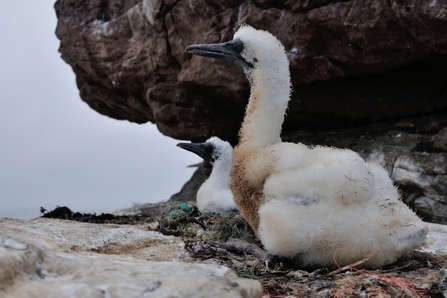
It's estimated that 99% of seabird species will be ingesting plastics by 2050. Photo: Justin Hart.
Physical harm
A hungry animal will search high and low for a snack, yet empty food jars and containers can become a deadly trap for wildlife. Sharp objects like hard plastics, glass and metals scattered in the environment can cause nasty cuts and wounds, which can become infected and cause further harm. If you’ve ever stepped in chewing gum you’ll understand the frustration, but for birds, being unable to take flight due to gum being stuck in their feathers can be a matter of life or death.
Becoming hooked or caught in discarded fishing gear is a huge threat to our marine creatures, and similar issues are faced by terrestrial animals. Sadly, entanglement in rubbish can lead to animals becoming stuck and unable to carry out their usual activities like foraging or looking after their young.
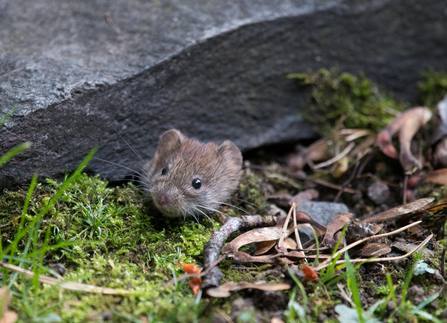
Keep Britain Tidy estimated that 2.9 million small mammals - like shrews, hedgehogs and voles - are dying each year after getting stuck in discarded bottles and cans. Photo: Donald Sutherland.
A vessel for diseases and harmful chemicals
Litter may harbour disease-causing microbes or toxins that can be harmful when ingested or released into our soils, rivers or seas. The chemicals that leach from microplastics into the environment or animals who ingest them are invisible to us, yet cause problems such as infertility, cardiovascular diseases and cancers. The impact of littering is so profound that it’s not just our animals that suffer, it’s plants too. Microplastics have been linked to reduced plant growth and nutrient uptake, causing problems for the whole ecosystem.
What can we do to help?
In more positive news, anyone, anywhere can help to reduce litter in the environment.
Make conscious changes to recycle, reduce and re-use wherever possible to limit how much you are disposing. If throwing something away is unavoidable, reduce the impact on the environment by cutting through things like plastic loops or bands. Instead of releasing balloons or sky lanterns to mark special occasions, opt for more wildlife-friendly choices like planting beautiful flowers or embarking on a memory walk somewhere meaningful.
If you want to take a more active role in the fight against pollution, join a local litter picking group, attend organised clean-up events or sign up to our Spring Pickers litter-picking challenge.


